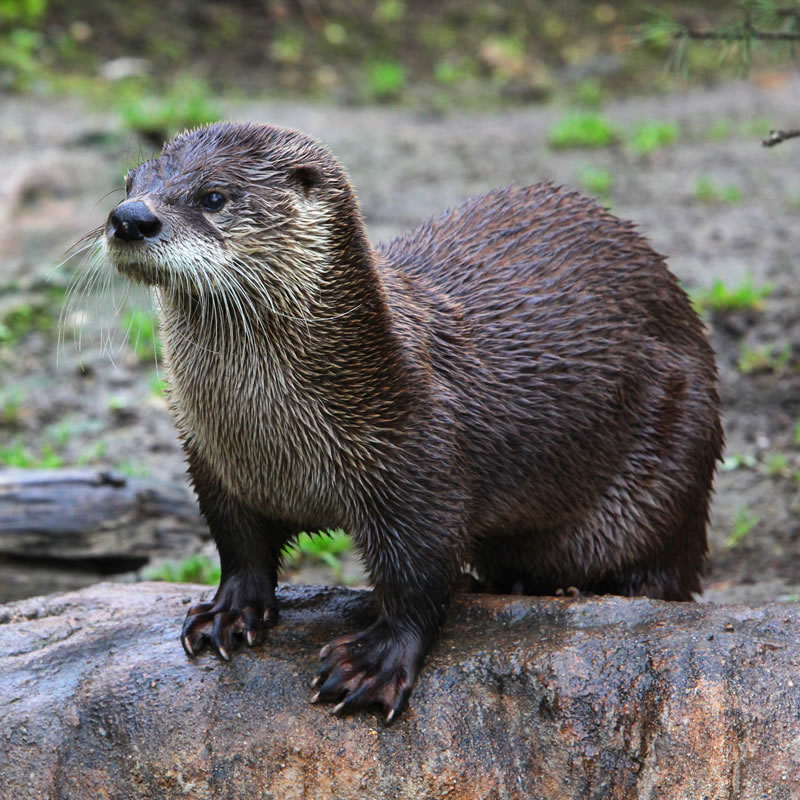
Scientific Name
Lontra canadensis
Classification
| Kingdom | Animalia |
| Phylum | Chordata |
| Class | Mammalia |
| Order | Carnivora |
| Family | Mustelidae |
| Genus | Lontra |
| Species | canadensis |
IUCN Redlist Status

Location
At one time, North American river otters were found throughout much of the United States and Canada. Due to habitat loss and fur-trapping practices, the number of river otters has declined. They now live primarily in the north-central and north-western United States, and various parts of Canada. This particular species of otter is not classified as endangered at this time, but habitat loss could be an ongoing concern.
Habitat
North American river otters live in streams, marshes and back waterways surrounding lakes, especially the Great Lakes. They are also found in similar areas near certain parts of the Pacific and Atlantic coasts.
Diet
They are carnivorous, and eat a variety of foods. Their diets include fish, crayfish, mollusks, frogs, bird eggs and sometimes small mammals.
Size
North American river otters grow to sizes of 2 - 2.5 feet, not including the tail. Their tails can grow to sizes of another 1 - 1.5 feet in length.
Description
Their fur is dark brown, except for the chin and chest area where it is a lighter brown or cream color. The fur is thick and helps to keep otters warm while also repelling water. They have long, tubular bodies that help make them hydrodynamic.
River otters' feet are highly specialized. All four feet are webbed helping river otters propel through the water. They can also use their front two feet to grab or hold items.
River otters have very small ears on their heads, and have two small eyes. Their muzzle is short and may also have lighter colored fur. They also have long whiskers on their heads which help them to feel objects in the water.
Adaptations
These adorable animals are adapted to living in and near water. Their nostrils and ears will close completely when they submerge underwater to look for food. Their webbed feet and tail will give them propulsion, and they can move their bodies to help them move through the water as well. All of these adaptations combine to make river otters supreme swimmers in their native habitats.
Behaviors
River otters are intelligent, playful creatures. They can be seen sliding down mudbanks or playing with other otters. In the water, they will sometimes pop their heads up like periscopes to see what is going on around them, and then dive back down after a few seconds.
Reproduction
River otters give birth to two or three young in early spring. While the entire gestation period of females is approximately 10 - 11 months, the babies are only developing inside the mother for a period of about 2 - 3 months. This process is called delayed implantation.
Other Facts
River otters can make a variety of sounds including whistles and hisses.
They are now protected in parts of their range due to decreased numbers. They are not endangered
